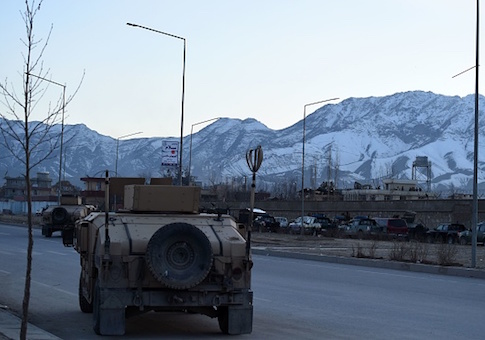Afghanistan is ramping up investment in economic development as part of an effort to stabilize the country's security environment while moving away from reliance on foreign aid, the chief adviser to Afghan President Mohammad Ashraf Ghani said Friday.
"There's not any country that has moved from poverty to prosperity through foreign aid. It's usually investment that can change a country in a very fundamental way," M. Homayun Qayoumi said during an event at the Center for Strategic and International Studies in Washington, D.C.
Qayoumi said the Afghan government has emphasized the development of infrastructure projects that engage local communities to provide jobs and economic security. The projects also help forge a connection between Kabul and local populations.
"When [locals] see their role and their future to be tied into [these projects], that in itself improves security in a major way," he said.
Qayoumi cited Afghanistan's revival of an irrigation project in the Helmand province as an example of the connection between security and economic development. The project, promised to locals 70 years ago, includes the finalization of the hydropower Kajaki Dam.
"The locals are really the ones who are taking that [project] and warning all of these insurgencies coming from Pakistan that these projects are vital to our future," he said. "This is where we see the hope of the future, where economic opportunities would buttress the security environment."
In 2016, a year after Afghanistan's National Unity Government rose to power, President Ghani introduced an infrastructure plan outlining projects to advance the nation's economy in the agriculture, mineral, trade, and manufacturing sectors.
The proposal triggered development and construction of 29 dams, some of them hydroelectric, within the past year. Once completed, the capacity of those dams is expected to equal two and a half Hoover Dams. Given the country's arid environment, the dams would have a dramatic impact on Afghanistan's agricultural sector.
The government also is developing a national power grid. Today, 77 percent of Afghanistan's electricity is imported. Officials in Kabul anticipate that in five years that country will not only be self-sufficient in energy production but will also have the capacity to export electricity.
In the second half of 2016, Afghanistan attracted over $800 million in foreign and domestic investments for its energy sector. Qayoumi said this money would go toward construction of hydropower plants, solar projects, natural gas, and more.
"In terms of infrastructure projects, the number of dams that we have started in last year and a half is more than what we've done in the prior 200 years," Qayoumi said. "If you look at the amount of electricity generation that we started in the last year, it's more than what we've done in the prior 60 years."
Qayoumi said assistance from the United States and other Western nations is still imperative to Afghanistan's security environment, but said the government is hopeful that the country can begin moving away from its dependence on the West.
